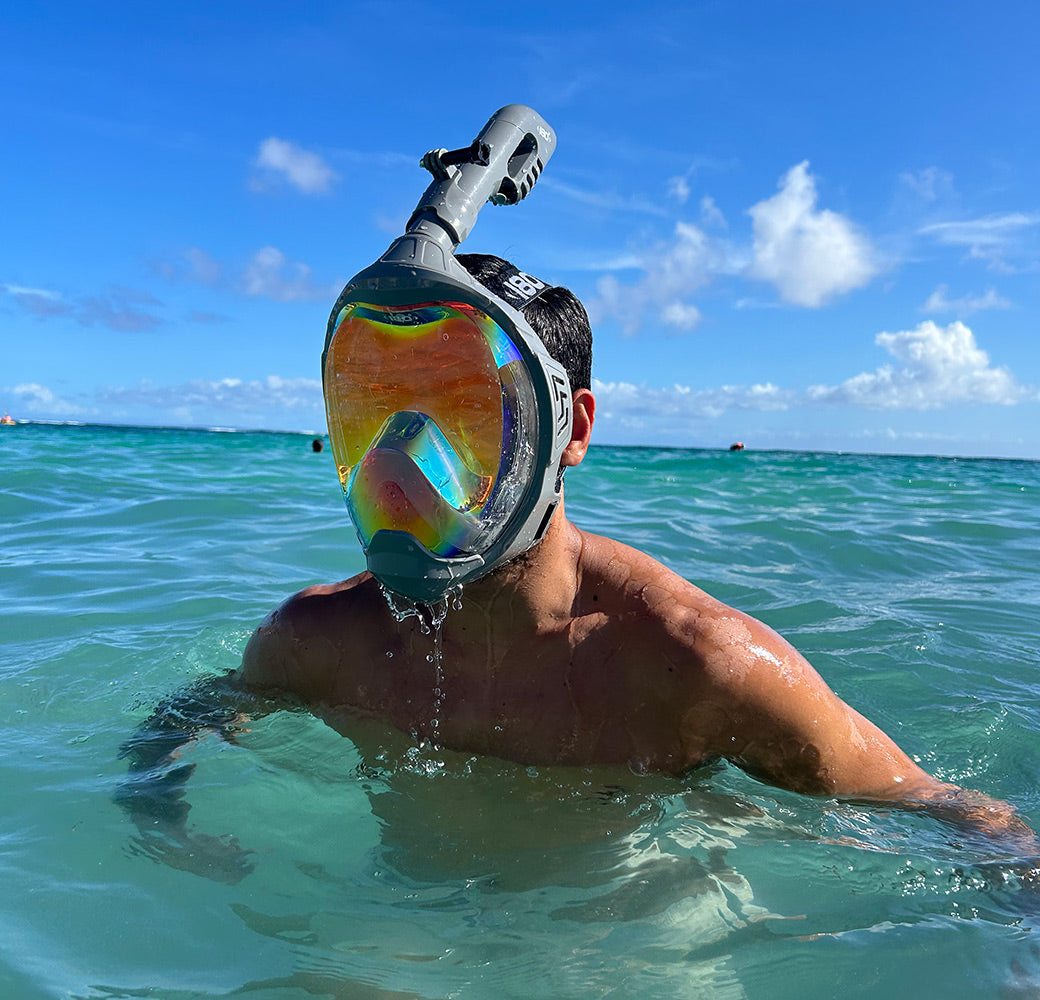Snorkeling is a fascinating way to explore the underwater world without the need for complex snorkeling equipment or training. Whether you're gliding over a coral reef or swimming alongside colorful marine life, the key to a successful snorkeling experience lies in one essential piece of gear: the snorkeling mask. But how does this mask actually work? Let's dive into the mechanics and features of a snorkeling mask to understand how it enables us to breathe and see clearly beneath the surface.
The Basics of a Snorkel Mask
A snorkeling mask is a specially designed face mask that allows you to see and breathe comfortably while your face is submerged in water. The mask is composed of three main components:
First: The Lens
This is the clear part of the mask that covers your eyes and allows you to see underwater. The lens is typically made from tempered glass or high-quality polycarbonate, both of which are durable and resistant to scratching. The lens creates an air pocket in front of your eyes, which corrects the way light refracts underwater, allowing you to see clearly.
Second: The Skirt
This is the soft, flexible part of the mask that creates a watertight seal around your face. The skirt is usually made from silicone or rubber, which molds to the contours of your face to prevent water from leaking in. A good seal is crucial for maintaining the air pocket in front of your eyes and keeping water out of your nose.
Third: The Snorkel
The snorkel is a tube that allows you to breathe air from above the water's surface while your face is submerged. Traditional snorkels have a simple design, while more advanced snorkels feature valves that close when you dive underwater, preventing water from entering the tube.
How a Snorkel Mask Works
When you wear a snorkeling mask, the skirt creates a sealed air pocket in front of your eyes and nose. This air pocket is essential because it allows you to see clearly underwater. Without the air pocket, light would refract differently as it passes through water, making everything appear blurry. The mask lens ensures that light enters your eyes in the same way it does on land, giving you a clear view of your surroundings.
The snorkel attached to the mask plays a critical role in allowing you to breathe while your face is in the water. When you place the snorkel in your mouth and submerge your face, the top of the snorkel remains above the water's surface. This allows you to breathe air through the snorkel without having to lift your head out of the water.
Advanced Features from Full-Face Snorkeling Masks
In recent years, full face snorkel masks have gained immense popularity. These masks cover your entire face, including your eyes, nose, and mouth, and have an integrated snorkel at the top. The key advantage of a full face snorkel mask is that it allows you to breathe naturally through both your nose and mouth, making it more comfortable for beginners.
Full face snorkel masks also have separate breathing chambers, ensuring that exhaled air exits through a different pathway, reducing the risk of fogging. Some models even feature dry-top snorkels with one-way valves, which prevent water from entering the snorkel if you dive underwater.
Fog Prevention
One common challenge with snorkel masks is lens fogging, which can obstruct your underwater view. Fogging occurs when the warm, moist air from your breath condenses on the cooler lens. To prevent this, many masks are treated with an anti-fog coating. Additionally, you can use anti-fog solutions or simply rinse the mask with water before use.
Conclusion
A snorkeling mask is a marvel of simple yet effective engineering. By creating an air pocket in front of your eyes and allowing you to breathe while your face is submerged, the mask opens up a window into the underwater world. Whether you're using a traditional mask and snorkel or a modern full face snorkel mask, understanding how this essential piece of gear works will enhance your snorkeling experience, allowing you to explore the beauty of the ocean with ease and confidence!


Share:
A Guide to New Wonders: Exploring the Best Snorkeling In Florida
Best Places to Snorkel Near Miami